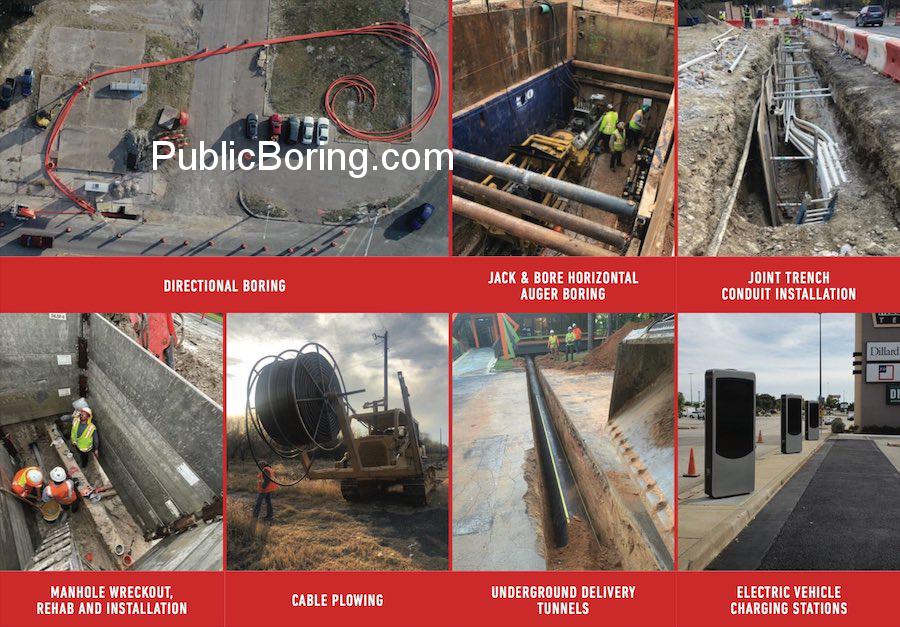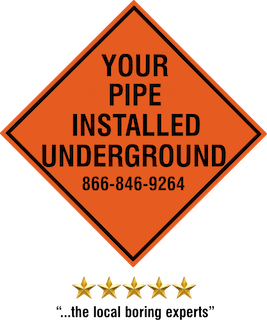Conduit Construction: A Detailed Overview of the Process and Services
Conduit construction pertains to the installation of tubular structures designed to protect and route electrical wiring, fiber optic cables, and other utilities underground. This construction approach minimizes exposure and potential damage to these utilities. Here’s a comprehensive guide on the process and services related to conduit construction:
- Planning and Assessment:
- Engaging Experts: Companies or corporations with expertise in conduit construction are approached to assess the project’s feasibility and requirements.
- Construction Site Development: A detailed evaluation of the construction site takes place, factoring in potential challenges, soil types, and the planned route for the conduit.
- Equipment and Technique Selection:
-
- Choosing the Right Method: Depending on the site conditions and project requirements, either trenching, cable plowing, or boring might be chosen. In some instances, slick bores might be used for smoother conduit housing.
- Equipment Choice: Depending on the method selected, equipment like cable plows or the ASAP Auger might be chosen. For harder terrains, specialized equipment for hard rock boring may be necessary.
- Initiation of Conduit Construction:
-
- Excavation: Using methods like hand digging or hand trenching, an initial excavation is made for the conduit placement. In areas near highways or interstates, care is taken to ensure minimal disruption.
- Boring and Plowing: For trenchless methods, boring techniques or cable plowing are employed. This allows conduits to be placed without extensive digging.
- Conduit Installation:
-
- Conduit Placement: Post excavation or boring, conduits are installed underground. These can house utilities ranging from electrical cables to fiber optics.
- Ductbank Installation: For larger projects that require the bundling of multiple conduits, ductbank work is done. This organizes and houses several conduits, often encased in concrete for added protection.
- Utility Housing:
-
- Utility Pulling: Once the conduits are placed, utilities are “pulled” or routed through them. This can range from electrical cables for power distribution to fiber cables for telecommunications.
- Fiber Boring for Telecommunication: Specific boring techniques are used to lay fiber optics for services like FTTB (Fiber to the Building), FTTH (Fiber to the Home), FTTCS (Fiber to the Curb/Cell Site), and FTTT (Fiber to the Tower).
- EV Infrastructure: Conduits also play a role in developing infrastructure for electric vehicle charging stations, safely housing the necessary electrical connections.
- Collaborations and Associations:
-
- Government, Military, and Co-ops: Conduit construction projects might be in collaboration with local co-ops, government entities, or for specialized military purposes.
- Engaging Subcontractors: For comprehensive projects, subcontractors might be employed to handle specialized segments of the project.
- Finalization and Restoration:
-
- Landscape Rehabilitation: After the conduits are installed, the disturbed areas are restored to minimize environmental and aesthetic impacts.
- Manhole Services: To provide access points to the conduits, manhole installation, rehabilitation, and precise placement services are rendered.
- Emergency and Contingency Handling:
-
- Emergency Services: In case of unexpected challenges or damages, companies are equipped to handle emergencies, ensuring the safety and integrity of the installed conduits.
- Expansion and Future Adaptations:
-
- Smart Cities and Renewable Energy: With the growth of smart cities and the increased reliance on renewable energy sources like wind farms and solar farms, conduits play a critical role in housing and protecting the necessary infrastructure.
Conduit construction serves as the backbone of modern infrastructure, safeguarding critical utilities and ensuring their efficient functioning. With advancements in technology and growing urbanization, the importance of robust conduit construction is more pronounced than ever.


